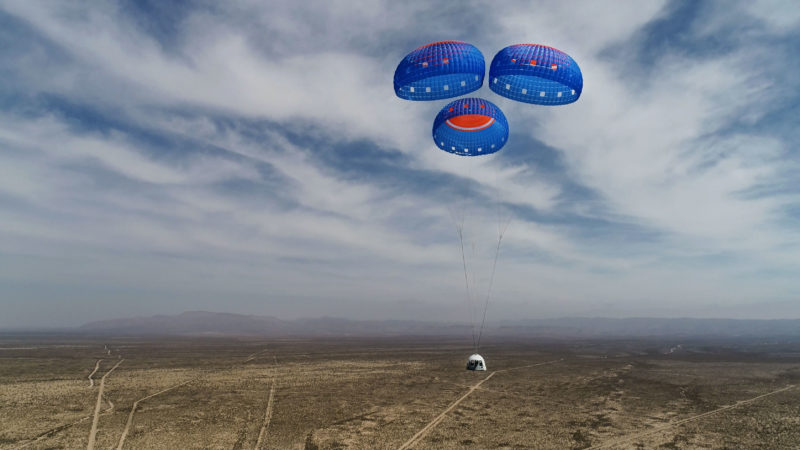
Sixty years to the day since its Project Mercury namesake became America’s first man in space, Blue Origin announced on Wednesday that its next New Shepard booster will fly later this summer with a six-strong human crew. “On 20 July, New Shepard will fly its first astronaut crew to space,” the Kent, Wash.-headquartered launch provider revealed. “We are offering one seat on this first flight to the winning bidder of an online auction.” It is expected that the NS4 vehicle—the selfsame booster and crew capsule that has reached suborbital space twice this year, most recently just last month—will rise again from Launch Site One in West Texas on the 52nd anniversary of the first human lunar landing.
With both rocket and crew capsule named in honor of Al Shepard, who rode the tiny Freedom 7 spacecraft into the history books six decades ago, and later walked on the Moon, it is entirely fitting that Jeff Bezos’ organization should choose “National Astronaut Day” to make its announcement. According to details published on Blue Origin’s website, the auction for the single biddable seat extends through 12 June.
“Sealed online bidding” runs for the next two weeks, whereby bids are kept private, after which “Unsealed online bidding” will begin on 19 May. At this stage, bidding becomes visible to others and “participants must exceed the highest bid to continue in the auction”. This will culminate on 12 June with a live online auction.
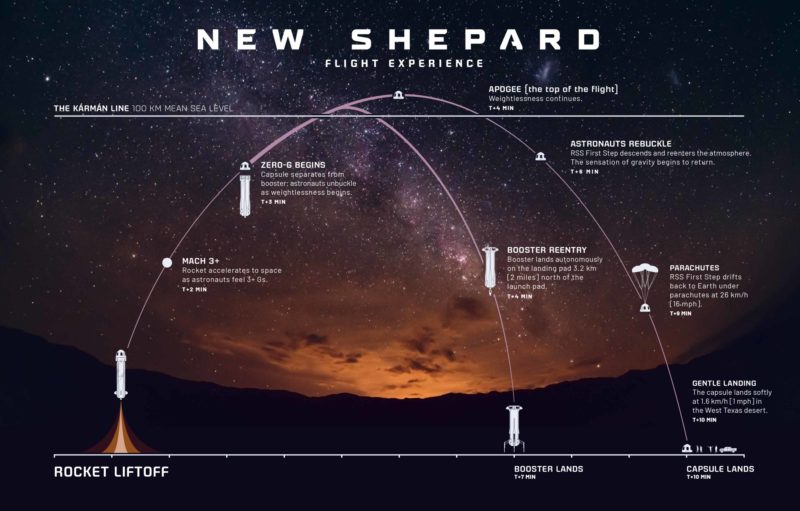
“The winning bid amount will be donated to Blue Origin’s foundation, Club for the Future, to inspire future generations to pursue careers in Science, Technology, Engineering and Mathematics (STEM) and help invent the future of life in space,” it was reported Wednesday.
“On this day, 60 years ago, Alan Shepard made history by becoming the first American to fly to space. In the decades since, fewer than 600 astronauts have been to space above the Kármán Line through a meticulous and incremental flight program to test its multiple redundant safety systems. Now it’s time for astronauts to climb aboard. This seat will change how you see the world.”

The historic flight will be the 16th mission by New Shepard and is expected to mark the third foray into suborbital space for the NS4 booster/capsule combo, which previously flew together in January and April. The 59-foot-tall (18-meter) NS1 first flew back in April 2015 and passed an altitude of 62.4 miles (100.5 km), thereby exceeding the “Kármán Line” which is generally recognized to be the edge of space.
However, a loss of hydraulic pressure during descent meant the NS1 booster was not recovered. In November 2015, the NS2 booster flew its first mission flawlessly and came home to a smooth landing. In doing so, it marked the first occasion that a suborbital-class booster had returned from space and achieved a vertical landing.
Over the course of a year, NS2 flew four more times, chalking up several significant flight milestones as Blue Origin worked toward its plan for suborbital human spaceflight. The descent profile of the crew capsule was tested under two parachutes (rather than the nominal three) and on NS2’s fifth and final mission in October 2016 New Shepard’s in-flight abort system was successfully trialed.
Following NS2’s retirement, the NS3 vehicle came online and flew its maiden voyage in December 2017. It went on to fly seven times by October 2020, achieving a peak altitude of 73.8 miles (118.8 km) and demonstrating not only the upgraded Crew Capsule 2.0, but also a heavily instrumented test dummy, nicknamed “Mannequin Skywalker”. Last January, NS4 made its first flight, reaching 65.75 miles (105.82 km) and demonstrating speakers, microphones, a crew alert system and push-to-talk buttons.
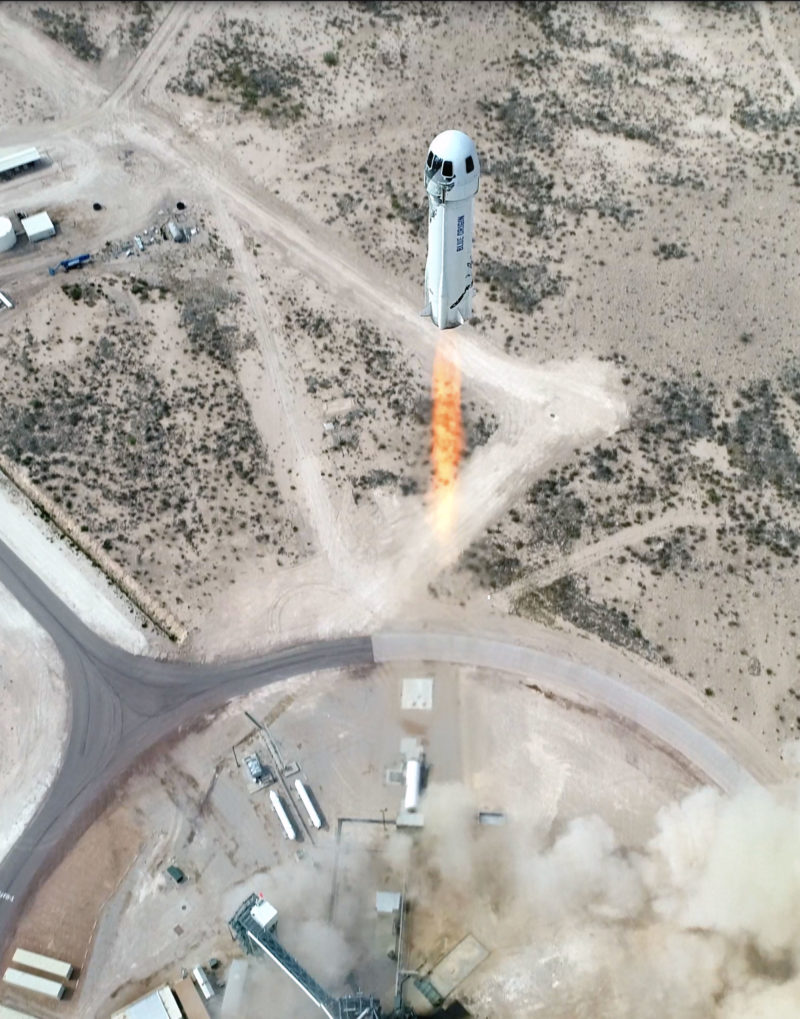
Its capsule also benefited from cushioned wall-linings and sound suppression devices to reduce ambient noise levels and cooling and humidity controls to regulate temperatures, scrub carbon dioxide from the air and circumvent window-fogging. On both its January launch and its second flight on 14 April, the NS4 vehicle saw the New Shepard booster rotate at a couple of degrees per second during ascent, which on human flights will afford passengers spectacular 360-degree views.
Perhaps the nearest analog for what the 20 July crew will experience came during last month’s flight, when a group of senior Blue Origin personnel—Vice President of Legal and Compliance Audrey Powers, Chief Financial Officer Susan Knapp, Vice President of Sales Clay Mowry and New Shepard’s designer Gary Lai—rode the two miles (3.2 km) from “the Barn” where the booster is readied for flight out to Launch Site One.
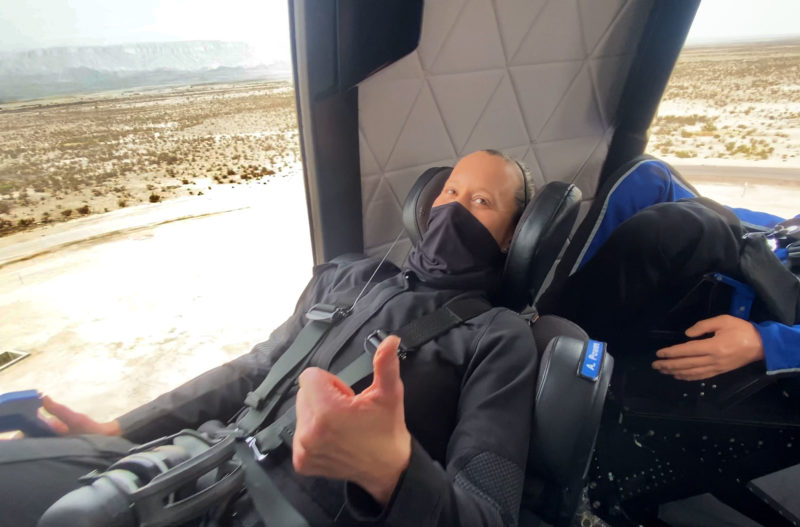
They climbed the four flights of stairs up the gantry, after which Lai and Powers boarded the crew capsule and completed strap-in activities and communications checks with Capsule Communicator (CAPCOM) Sarah Knights. Assisted by the Tower Operations Team, they disembarked before New Shepard’s launch, but after the successful landing of the crew capsule they participated in unstrapping and egress exercises.
The lucky bidder for the 20 July flight can expect quite a ride, although Blue Origin remain tight-lipped about the identities of the other astronauts, or even if a full crew of six will be aboard. “We will not be sharing further details about who will be flying on our first astronaut mission,” Blue Origin told AmericaSpace.
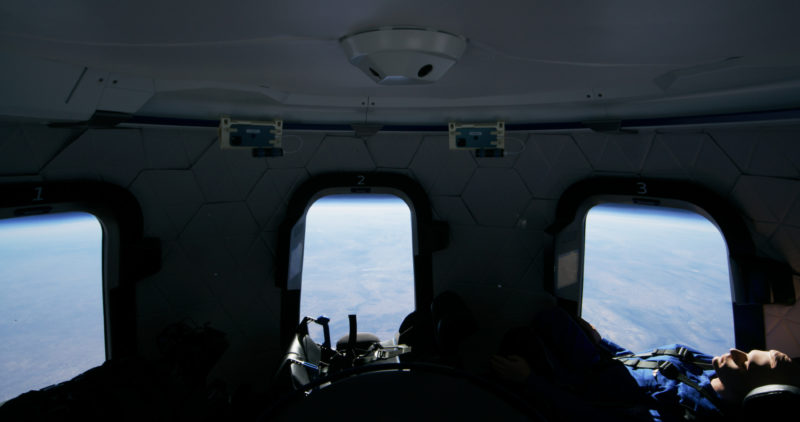
Together with his or her crewmates, they will be loaded aboard the crew capsule a little more than a half-hour prior to launch. At T-2 minutes, the gantry will be retracted and at T-16 seconds the booster will transition its guidance system to internal power. Engine Start will be commanded at T-4 seconds—as New Shepard’s single BE-3 main rocket engine comes alive with a thrust of 110,000 pounds (50,000 kg)—after which a rapid climb away from the flatness of West Texas will commence.
A minute into the flight, the crew will pass through peak aerodynamic turbulence and the BE-3 will shut down 90 seconds later. As the crew capsule separates from New Shepard, the lucky space travelers will unbuckle from their seats and enjoy a few minutes of weightlessness as their upward momentum pushes them to an apogee of roughly 66.4 miles (106 km), equivalent to 350,800 feet above mean sea level. The effects of gravity will then inexorably draw them back to Earth, with a soft, parachute-aided touchdown some ten minutes after launch.
FOLLOW AmericaSpace on Facebook and Twitter!




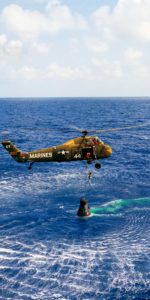
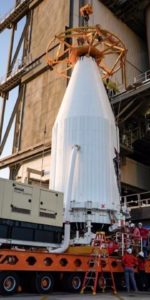
One Comment
One Ping
Pingback:New Shepard Lifts Siblings, Youngest, Oldest Space Travelers Above Kármán Line